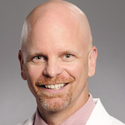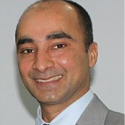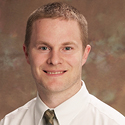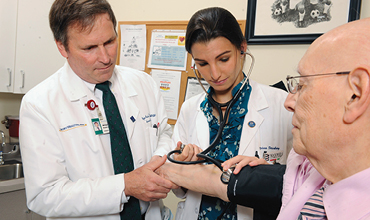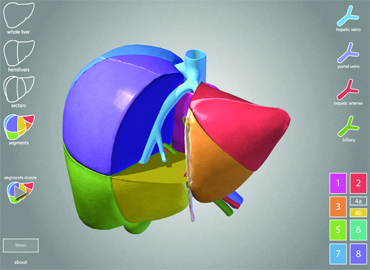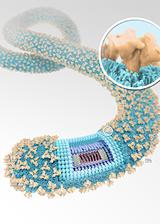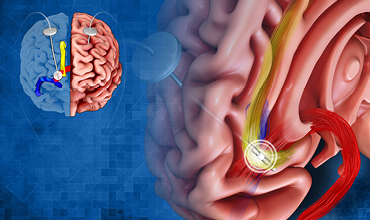If this message displays incorrectly, please view the web page
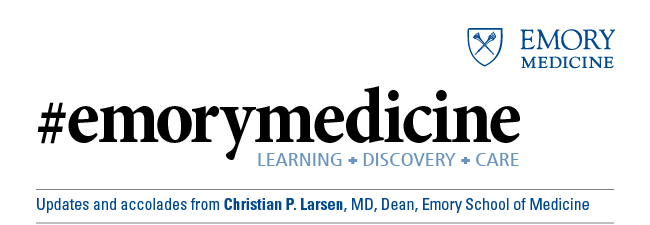
| December 10, 2014 | ||||
| Appointments
New Roles for Ted Johnson
Theodore Johnson, Paul W. Seavey Professor of Medicine, has been named physician director of Emory Medicine Primary Care and Population Health and chair of the Department of Family and Preventive Medicine. He is also Interim Director of Hospital Medicine and Director of Geriatric Medicine and Gerontology in the Department of Medicine. New Vice Chair of Education and Integration
Wendy Armstrong has been appointed to Vice Chair of Education and Integration in the Department of Medicine. As a physician, researcher, and public health leader, Armstrong has spent her career studying disparities and barriers in access to care. Record Number of AAAS Fellows The American Association for the Advancement of Science (AAAS) has elected nine scientists from Emory as 2014 Fellows. The new fellows include Jeremy Boss (microbiology & immunology), Richard Cummings (biochemistry), Haian Fu (pharmacology, hematology & oncology), Randy Hall (pharmacology), John Hepler (pharmacology), Fadlo Khuri (hematology & oncology), Pat Marsteller (biology), David Stephens (microbiology & immunology, infectious diseases), and Stephen Traynelis (pharmacology). 2014 Dean's Teaching Awards Recipients of the Dean's Teaching Award are nominated by colleagues and students and chosen by the Teaching Awards Committee for their dedication to teaching and their many contributions as course directors and mentors: Joanna Bonsall, Jada Bussey-Jones, Eric Felner, Maura George, Clifford Gunthel, Joseph Hilinski, Debra Houry, Zoher Kapasi, Brian Kogon, Andrew Kowalczyk. New Club Members The MilliPub Club honors faculty who have published papers garnering 1,000 or more citations: Peter Block, John Boli, Georgia Chen, Karen Conneely, W. Dana Flanders, Hal Franch, Andreas Fritz, Alan Gordon, Robert Guyton, Ihab Hajjar, Vicki Hertzberg, Narasimhan Jagadeesh, Chai-Yi (Alex) Kuan, Michael Kutner, Mark Mullins, Michael Pratt, Barbara Rothbaum, Martin Sanda, David Weiss, Keith Wilkinson, Chunhui Xu. The 1% Club recognizes faculty whose NIH proposals have been ranked in the top 1% by NIH reviewers: Rafi Ahmed, Luke Brewster, Lou Ann Brown, Bruce Crosson, Janet Cummings, Cheryl Day, Cristina Drenkard, Brian Evavold, Negar Fani, Theresa Gauthier, Murali Kaja, Timothy Lash, Sung (Sam) Lim, Linda McCauley, Cheng-Kui Qu, Ioannis Sechopoulos, Patrick Sullivan, Ya Wang, David Weinshenker, Jens Wrammert. Kudos Jordan Amadio, a neurosurgery resident and cofounder of the first accelerator program for neuroscience-related start-ups, NeuroLaunch, received an Atlanta Business Chronicle 2014 "40 Under 40" award.
Faisal Khosa (above, radiology) received the Medal of Excellence (Tamgha-i-Imtiaz) from the government of Pakistan, the College of Physicians and Surgeons Award for 15 years of service to medical universities in Pakistan, and the 2013 American Roentgen Ray Society Scholarship. Helen Mayberg (psychiatry, neurology, and radiology) received the Cura Personalis ("care of the whole person") award at Georgetown University Medical Center's 2014 convocation. The award is given each year to a health professional who has made "outstanding contributions to human health guided by compassion and service." Ray Schinazi (pediatrics) received the Distinguished Scientific Achievement Award from the American Liver Foundation. Read more.
Sean Stowell (above, pathology) was honored with the NIH Director's Early Independence Award, which includes a five-year research grant of $1.25 million and recognizes exceptional early-career scientists. Stowell's research is focused on ABO blood group antigens, the carbohydrates on the surfaces of red blood cells that dictate blood transfusion compatibility. Nearly 30 SOM students took part in the clinical vignette and research poster competitions at the Georgia Chapter of the American College of Physicians' annual meeting at Callaway Gardens. Brendan Lovasik took first in both the research and clinical vignette categories (a first ever for the student meeting); in clinical vignettes, Lillian Tsai won first, Lisa Shandley and Michael Evans, second, and Kevin Harrell, third. Events Through Dec. 19: Donate children's books to patients at Children's Healthcare of Atlanta at Egleston. Emory Bookstore. More info. Through March 2015:"When the Emory Unit Went to War," exhibit at Woodruff Health Sciences Center Library. Read more. |
|
Clinic Specializes in Elusive Diagnoses
To prepare for his new role as director of the Emory Special Diagnostic Services (ESDS) clinic, Clyde Partin and his team of clinicians reviewed the New England Journal of Medicine's first 200 case conferences from the 1920s, as well as 200 cases from 2005 to 2007. They also read summaries of House MD scripts from the long-running television series, and analyzed Lisa Sanders's "Diagnosis" and "Think Like a Doctor" columns from The New York Times. "Many of Sanders's cases were actually the basis for the House episodes," Partin says. "It may not have been the most scientific approach, but we were curious about what sort of diagnoses were persistently perplexing." Unlike the cases handpicked for a TV medical drama, which were almost always neatly wrapped up by the end of the hour, "in the trenches of diagnostic clinics, answers waltz out of the closet in less than half of the cases," Partin says. And, in any case, rare diseases or little known maladies were not what Partin expected to see most frequently at the clinic, which opened in September 2013. "Atypical presentations of common diseases are much more common than typical presentations of rare disease," he says. So Partin's own preparations included reading up on commonly missed diagnoses in outpatient settings, although he found the literature on this to be sparse and more focused on inpatient diagnoses. "The subtle distinctions between which diagnoses are missed versus misdiagnosed, and which are just hard to diagnose, can be vexing," he says. The ESDS clinic's team of Rollins Distinguished Clinicians—including Partin, David Roberts, Jonathan Masor, and Thomas Jarrett, along with nurse-navigator Debra Cohen—recently saw their 100th patient, and have developed their own intriguing case files, some of which can be read in the "You Be the Doctor" column in Emory Medicine magazine. The clinic's emphasis on diagnosing puzzling illnesses has invited comparisons to "disease detectives," but Partin sees parallels with auto mechanics as well, in the style of the Magliozzi brothers on the popular former radio show Car Talk. "They're a brilliant example of deductive reasoning leading to a solid diagnosis time after time," he says. "Dr. Partin's leadership and caring in his work with this clinic have impressed me tremendously," says Ted Johnson, general medicine division chief. "He has drawn on expert networking, exemplary service to patients, and a focused concentration to help get patients and their families from not knowing to being able to address their conditions. For the patients, it's that relief of what I have has a name. It takes tremendous work to get to that point." The idea for Emory's diagnostic clinic emerged from a proposal by members of the 2011 Woodruff Leadership Academy class. It is one of a handful of clinics in the US devoted to patients with complex, undiagnosed illnesses. Partin says they often rely heavily on biopsy pathology ("the issue is tissue"), and he believes advanced computer analysis and genetic sequencing will play larger roles in the future. The clinic has had many gratifying successes —patients whose illnesses were identified and properly treated. Inevitably, though, some cases remain enigmas. "Declaring a hard-earned diagnosis to be correct," Partin says, "turns out to have layers and indistinct borders." A Picture Is Worth…
With projects ranging from a virtual liver app to an illustration of deep brain stimulation, the Visual Medical Education (VME) team, under the direction of Michael Konomos, is taking on new challenges in portraying medicine visually. By illuminating complicated anatomical concepts, accurately depicting human organs in 3D, probing the depths of microscopic organisms, and presenting patient prep in easy-to-understand sequential illustrations, Konomos says, the team can have a positive impact on patient and educational outcomes. The VME team includes Konomos, in the School of Medicine, Satyen Tripathi in the Department of Surgery, and Andy Matlock, at the Carlos and Davis Center for Surgical Anatomy and Technique (CSAT). The Liver App, targeted to medical educators, residents, and surgeons in training and produced through the CSAT, helps viewers learn about the organ inside and out. It won the Award of Excellence in the Commercial Interactive Media category at this year's Association of Medical Illustrators annual conference, and has sold 225 units so far in the Apple iTunes app store. Other CSAT projects in development include an app on pelvic anatomy and a common surgical procedures app or "video atlas" that will feature step-by-step video presentations shot in the OR.
The Come Clean app, designed for Emory's Wound Infection Group, is proving successful at helping patients take steps before surgery that can help reduce infection. "Did it make a difference? Preliminary survey results of patients look positive as to influencing behavior change," Konomos says.
An up-close look at an Ebolavirus virion, created by Tripathi, was a popular feature in Emory Medicine magazine's special Ebola issue. "I needed an illustration to go with our Q&A with infectious disease doctor Aneesh Mehta, which had a scientific bent, and the virion fit perfectly," says Mary Loftus, Emory Medicine editor. "I asked Michael if his team could pull something together, and Satyen came up with this in-depth but understandable depiction of the structure of Ebolavirus." A VME illustration of how deep brain stimulation (DBS) is used to treat severe depression received glowing reviews from neurologist Helen Mayberg. She says an important component of the procedure, which she developed, is clear delineation of the white matter tracts targeted by DBS. This is necessary for surgical planning to ensure precise placement of electrodes, to help her team in conceptualizing and communicating scientific findings, and in teaching others this evolving technique. "Michael's images are precise in representing our procedure and the underlying data," she says, "and have an aesthetic grace that gives the maps unexpected life and movement" (see below). Medical education in the 21st century has the ability to incorporate exciting new techniques like mobile apps, 3D animation, and e-books, says Konomos. "They allow us to reach a worldwide audience quickly," he says. "But at the end of the day, we are still focused on effective education. That is something that hasn't changed. We want to deeply engage patients, residents, and other learners in the content, to improve outcomes."
Stay Tuned for Upcoming Review The School of Medicine will be evaluated for re-accreditation during the 2015-2016 academic year. The accrediting body, the Liaison Committee on Medical Education (LCME), performs a rigorous review of all aspects of the program leading to the MD degree. In late October, the SOM hosted a successful LCME Kickoff event, bringing together more than 100 faculty, staff, and students who will serve on 15 LCME committees. The LCME site-visit preparation process involves 18 months of identifying the strengths and challenges of the school's MD program. For information about the overall accreditation process, committee structure, and timeline, visit bit.ly/LCME-EMORY. |

